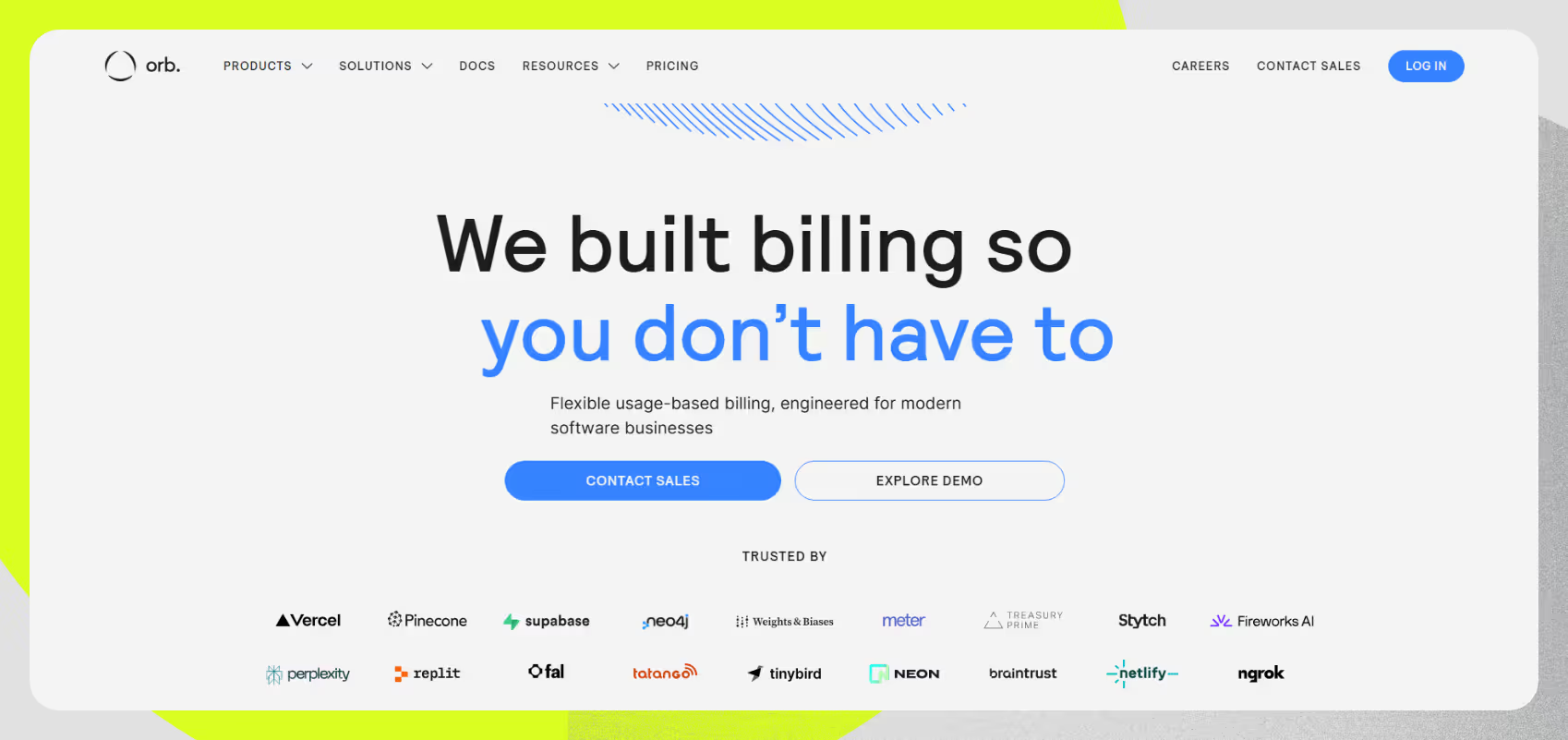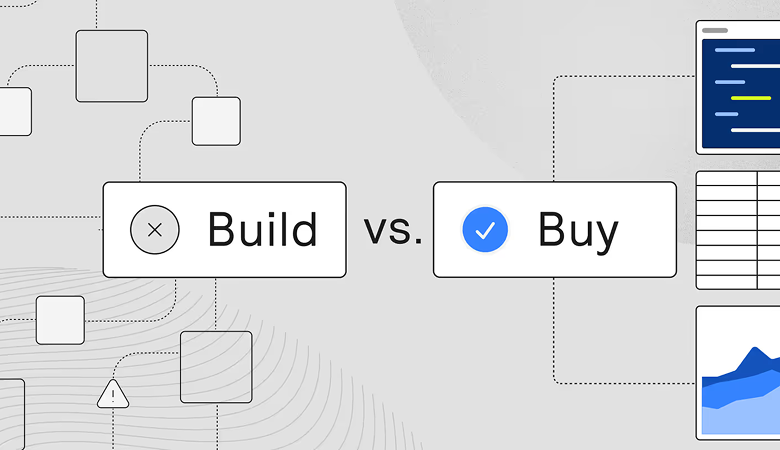Metronome has been making waves in the billing software space, promising a robust solution for usage-based pricing models. But how does it truly stack up? In this article, we'll look deeper into Metronome, separating hype from reality.
Metronome billing features analyzed
Metronome is a metering point solution for businesses that use usage-based pricing models. It allows businesses to precisely track various consumption metrics, such as API calls or data storage.
Metronome's core strength is its sole focus on metering, which is specifically designed for engineers who need to write billing logic into their data pipelines.
This is most useful for early-stage companies that simply need basic metering, only bill on one usage metric, and use other tools for invoicing or financial reporting.
These additional features further enhance Metronome's capabilities:
- Integrations: The platform easily integrates with popular billing providers, CRMs, and other business systems.
- Security: Robust security measures protect data, and the platform complies with industry standards.
- Simple price updates: Metronome billing includes centralized rate cards, letting businesses update pricing in one place and apply it across all customers. Temporary overrides — like discounts or promotional rates — can be applied without duplicating plans.
- Contract complexity management: Businesses can now structure complex commit contracts (e.g., prepaid credits, minimum spends, and postpaid overages), which are especially valuable for enterprise SaaS models.
- Rate variations: Dimensional pricing enables businesses to vary rates by customer traits, such as geography, usage tier, or business segment.
In which areas does Metronome fall short?
Despite its many strengths, there are several areas where Metronome falls short. Below, we break down some of the key shortcomings of Metronome’s metering solution.
Pricing changes rely on engineering
For businesses that need to change their pricing often and quickly, Metronome becomes a bottleneck. Since Metronome is built for developers, it requires coding and SQL knowledge in order to set up usage events and create billable metrics.
This introduces challenges such as:
- Finance and operations users will struggle to manage pricing models or contracts without developer involvement.
- There's no in-app training or step-by-step onboarding wizard, so teams must rely on documentation or support calls.
- Setting up complex billing rules or transforming data into billable units requires technical fluency.
For engineering-led teams, this isn’t an issue. But for teams where pricing or billing is owned by product, finance, or RevOps, relying on engineering slows down product launches, discourages experimentation, and reduces agility.
Limitations of data aggregation
Metronome uses a streaming aggregation model, where data is aggregated before Metronome ingests it. This type of processing model is typically used by solutions that can’t handle large volumes of data.
Since this model does not store raw event data, it comes with limitations that impact the customer experience:
- Companies must build and maintain data pipelines in order to reduce the amount of data sent to Metronome.
- Companies must predefine their usage metrics, making it more difficult to implement new pricing models.
- Data cannot be backfilled due to the lack of historical events, preventing companies from correcting errors, retroactively applying new pricing models, and fixing invoices.
- There are delays in reporting because data must be aggregated first.
Not a complete billing solution
With Metronome’s focus on metering, its solution isn’t as robust when it comes to other areas of billing.
For example, Metronome doesn’t offer built-in invoicing. Instead, it has native integrations with Stripe and marketplaces like AWS and Azure. If you use another invoice system, you’ll need to work with Metronome to build a custom integration.
Metronome offers simple out-of-the-box reporting, but product, finance, and executive leaders will find it limiting when they need to drill down into usage, individual customers, and revenue. Similarly, companies can offer their customers simple dashboards. For more complex or granular reporting, you’ll need to have engineering build custom dashboards.
Lack of pricing simulation
Imagine changing your pricing and seeing customers decrease their usage or even churn. This risk of losing revenue is exactly why being able to simulate the impact of pricing changes before pushing them live is crucial.
Pricing simulation is particularly useful for companies with GenAI products, as pricing models in the AI market are still developing. Being able to see how a small pricing change or completely new pricing structure will affect customer behavior and your revenue is extremely valuable.
As Metronome’s focus is on metering, it lacks advanced features, such as pricing simulation, that companies need to turn their pricing into a growth lever.
Gaps in complex data handling and billing
Metronome has limitations when it comes to handling highly customized billing data or pricing structures. These include:
- Tools are limited for transforming nested or multi-dimensional data into billable metrics.
- You have no built-in currency conversion or regional price book support.
- Businesses must often implement external logic to handle tax, currency, or regional differences.
If your billing depends on granular event streams or if you serve customers across currencies and tax jurisdictions, you'll likely need to invest in supplementary tooling.
Limited ecosystem and integration pain points
Metronome has expanded its integrations since earlier versions, offering support for Stripe, Salesforce, and cloud marketplaces like AWS and Azure. However, its pre-built integration library is still narrower than competitors like Chargebee or Maxio.
Some key limitations include the following:
- Metronome billing lacks native integrations for several popular ERPs and accounting platforms, such as QuickBooks and NetSuite.
- Stripe support doesn’t cover advanced functions like issuing credit memos out of the box.
- Marketplace billing (AWS, Azure) is limited to USD and offers a short data “grace period,” making international billing and late-arriving usage harder to manage.
These gaps often result in extra engineering work to bridge systems or maintain billing accuracy across platforms.
Support limitations and onboarding friction
Metronome offers support and solutions engineering for enterprise accounts, but onboarding can still feel more manual than expected. Pain points include:
- No guided onboarding wizard or embedded product tours.
- Documentation may lag behind recent feature updates.
- Smaller customers may face longer wait times or limited success resources.
While Metronome billing offers sandbox access and setup assistance, it’s not a plug-and-play experience. Teams should be prepared to invest in training or allocate developer time to get fully onboarded.
Room for improvement in compliance breadth
Metronome is secure and adheres to standard cloud SaaS practices. It’s SOC 2 Type II certified and includes encryption, SSO, and audit logging. That said, some enterprise and regulated industries may find their compliance offerings insufficient. Notable gaps include:
- No HIPAA certification (limiting use in healthcare applications)
- No FedRAMP or ITAR support (a concern for U.S. government vendors)
- No option for on-premises deployment
For most SaaS teams, these limitations won’t be blockers, but organizations in regulated verticals may need extra diligence or choose alternative vendors that offer broader compliance assurances.
Next steps: Consider Orb as a more practical choice for SaaS companies

We've taken a close look at some key Metronome billing capabilities, noting both its strengths and where it could improve.
For SaaS companies seeking an all-encompassing, flexible, and easy-to-use solution, Orb is the ideal alternative.
Orb is a done-for-you billing platform designed to make the complexities of SaaS and GenAI pricing easier. Orb supports a wide range of pricing structures, including subscriptions, tiers, hybrid, and usage-based models.
With Orb, you can unlock product usage data, accelerate new product launches, and access in-depth reporting. Trusted by Perplexity and Vercel, Orb allows businesses to build and scale their pricing strategies.
When comparing Orb vs. Metronome, Orb offers more flexibility, real-time adjustments, a full-stack billing platform, and tools that turn pricing into growth lever. Orb also caters to both technical and non-technical teams, making sure everyone has the tools they need.
Here's a glimpse into how Orb can elevate your billing experience:
- Streamlined data integration: Connect Orb to your existing data sources. These sources include popular options like S3 and Segment. You can also use our REST API. Track usage and generate invoices without disrupting your current setup.
- Flexible usage tracking: Define and measure the usage metrics that matter most to your business. Whether it's API calls, data storage, or any other activity, we track it. We help you capture the unique value you deliver and how it affects your bottom line.
- Pricing model versatility: Detailed per-unit pricing, tiered plans, and beyond. With its underlying raw event architecture, Orb has the flexibility to support a wide range of pricing models and allow companies to change their pricing on the fly. Our Plan Builder makes it easy to design and implement these models without engineering.
- Automated billing efficiency: Orb simplifies your entire billing process. We automate usage tracking, calculations, invoicing, payments, and adjustments. These automations save you time, resources, and reduce the risk of errors.
- Instant data visibility: Since Orb ingests raw event data, you get real-time access to detailed usage and billing analytics. Spot issues before they escalate, understand revenue trends, and gain transparency across every layer of your monetization funnel.
- Agility in pricing experimentation: With Orb RevGraph and Orb SQL Editor, you can experiment with pricing strategies and roll out changes progressively — no code rewrites or migrations required.
- Excellent accuracy and auditability: Orb separates your usage data from your pricing logic, making sure that no events are lost, no revenue is missed, and every calculation has a complete audit trail.
- Extensibility at scale: Orb’s modular platform grows with your business, enabling companies to adopt the tools they need. From high-volume data ingestion to seamless integration with finance tools, it’s built to handle scale and complexity.
- Revenue analytics and forecasting: Orb is a billing tool that’s also a growth enabler. Get built-in analytics on usage, revenue, and customer behavior to inform your next pricing move. Plus, you also get real-time reporting with ASC 606 compliance in mind.
- Strategic partnership and implementation support: Our team offers dedicated onboarding support, benchmarking, migration playbooks, and ongoing optimization sessions.
- Data-backed pricing simulation: Test, optimize, and predict pricing outcomes with real product data — before you launch changes live. With Orb Simulations, you can:
- Run pricing tests side-by-side.
- Forecast revenue impact and adoption rates.
- Eliminate pricing guesswork and make informed, risk-free decisions.
- Give finance, product, and executive teams a shared, data-driven foundation for monetization.
With Orb, you’re not just billing. You’re running a dynamic, data-first monetization engine that adapts with your business, so you can price with confidence, bill with precision, and scale faster.
Explore how Orb can help you build a scalable and efficient billing infrastructure.
Check out our flexible pricing options and experience Orb firsthand.

.avif)

